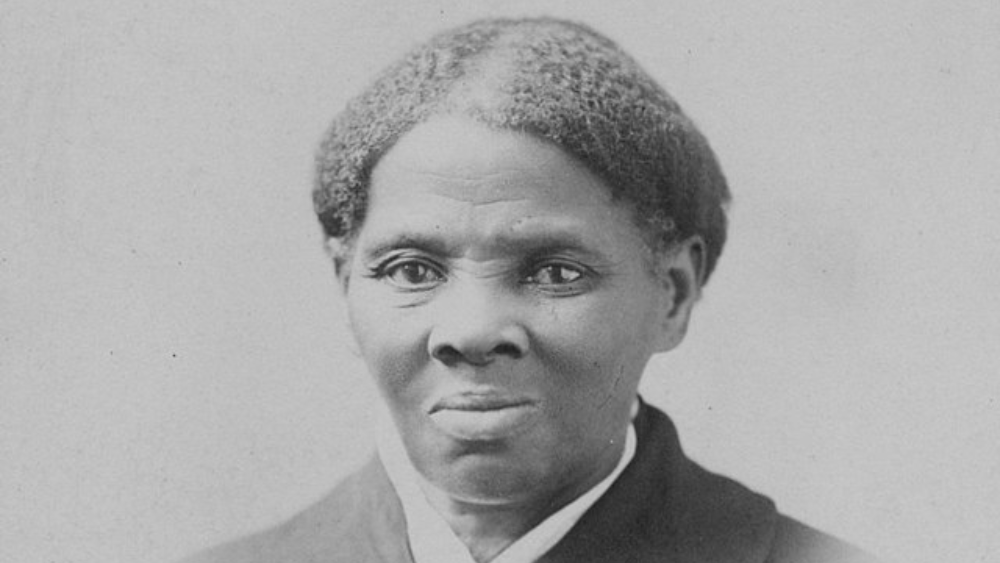Harriet Tubman (born Araminta Ross, c. March 1822, March 10, 1913) remains one of the most courageous, selfless, and determined figures in American history. As an abolitionist, freedom fighter, military leader, and women’s rights activist, Tubman dedicated her life to the liberation of others. Her heroism, fueled by her unshakeable faith and fierce sense of justice, helped shape the fight against slavery and laid the groundwork for civil rights movements for generations to come.
Born Into Slavery and Brutality
Araminta Ross was born into slavery in Dorchester County, Maryland. Her exact birthdate remains uncertain, but most historians place it around March 1822. She was one of nine children born to Harriet “Rit” Green and Ben Ross. Like many enslaved families, her family lived under the constant threat of separation. Tubman’s early years were marked by suffering, forced labor, and violence.
She endured frequent beatings, neglect, and emotional trauma. One of the most defining moments of her youth occurred when she was struck in the head by a heavy metal weight thrown by an overseer. The injury caused long-term complications, including painful headaches, dizziness, and spells of hypersomnia, episodes of sudden and deep sleep that could last for hours. Despite these health challenges, Tubman believed that these experiences connected her with divine messages, as she often described vivid dreams and religious visions that guided her decisions. Raised in a deeply religious Methodist household, Tubman’s spirituality was a key pillar of her strength and resolve.
A Daring Escape to Freedom
In 1849, after years of suffering and fearing the imminent sale of herself and her family members, Tubman made the life-altering decision to escape. She fled to Philadelphia, walking almost 100 miles, relying on a network of antislavery sympathizers, safe houses, and secret routes known as the Underground Railroad.
But freedom was not enough for Tubman. She could not rest while her family and others remained enslaved. Soon after gaining her own freedom, she made the courageous choice to return to Maryland to rescue her family and other enslaved individuals. Over the course of more than a decade, Tubman conducted about 13 missions and is credited with leading around 70 people to freedom. Each journey was fraught with danger; slave catchers, patrols, and bounty hunters posed a constant threat, but Tubman never lost a single passenger.
Moses of Her People
Her unmatched success and deep commitment earned her the nickname “Moses,” in reference to the biblical figure who led the Israelites out of slavery in Egypt. Like Moses, Tubman led with conviction, faith, and a strong sense of purpose. She often travelled by night to avoid detection, using the North Star as her guide. Her routes extended farther north after the Fugitive Slave Act of 1850 made it legal to capture escaped enslaved people even in free states. This law compelled Tubman to reroute her missions to Canada, then under British control, where slavery had been abolished.
Her strategic mind, bravery, and resourcefulness made her a master of covert travel. Tubman used coded messages, spiritual songs, and her deep knowledge of the terrain to evade capture. She carried a pistol, not only to protect herself and her passengers but also to discourage anyone from turning back, which could endanger the entire group.
Tubman also assisted freed individuals in finding work, housing, and resources to build new lives. Her role in the Underground Railroad made her a national symbol of resistance and a beacon of hope for countless enslaved people.
Collaboration with John Brown
Harriet Tubman’s influence reached beyond the Underground Railroad. In 1858, she met radical abolitionist John Brown, who was planning an armed insurrection to incite a slave revolt. Though Tubman did not participate in the actual 1859 raid on Harpers Ferry, she helped Brown plan and recruit supporters. Brown referred to her as “General Tubman” and deeply respected her bravery and strategic mind. Their shared commitment to ending slavery at any cost showcased Tubman’s growing stature in the abolitionist movement.

Heroine of the Civil War
When the American Civil War broke out in 1861, Tubman saw an opportunity to further her mission. She volunteered for the Union Army and initially worked as a nurse and cook. But her talents and intimate knowledge of Southern geography soon led her to more dangerous and critical roles.
Tubman became an armed scout and spy for the Union. She gathered intelligence, helped organize raids, and led expeditions into Confederate territory. Her most notable military accomplishment was her leadership role in the Combahee River Raid in South Carolina in June 1863. Working with Colonel James Montgomery, Tubman helped guide Union boats through mine-infested waters, leading to the liberation of more than 700 enslaved people. This operation made her the first woman in U.S. history to lead an armed military expedition.
Despite her invaluable contributions, Tubman was not paid for her military service for many years and was repeatedly denied a military pension. Her story, like that of many Black women of the era, highlights both the heroism and the systemic inequalities that persisted even in the North.
Life After the War
After the war ended in 1865, Tubman returned to her home in Auburn, New York, a property she had purchased in 1859. She spent the remainder of her life continuing to fight for justice, particularly in the realm of women’s suffrage. Working alongside figures like Susan B. Anthony, Tubman became a vocal advocate for the right of women to vote. She spoke at suffrage conventions and shared her life story as proof that women, especially Black women, could be powerful agents of change.
Tubman also established the Harriet Tubman Home for Aged and Indigent Negroes, a care facility for elderly African Americans who lacked support. She spent her later years caring for others, just as she had done throughout her life. Her health declined over the years due to the lasting effects of her childhood injury, but her spirit never wavered.
She died of pneumonia on March 10, 1913, surrounded by loved ones and buried with military honors at Fort Hill Cemetery in Auburn.
Tubman’s Enduring Legacy
Harriet Tubman’s life was a testament to the power of faith, courage, and sacrifice. Her impact has been felt across generations, and her legacy continues to inspire activists, educators, and ordinary citizens alike.
In recent years, efforts to honor Harriet Tubman have gained momentum. Schools, museums, highways, and national parks bear her name. In 2016, the U.S. Treasury announced plans to feature Harriet Tubman on the $20 bill, replacing President Andrew Jackson, though the timeline for this change remains uncertain. This symbolic gesture reflects her towering importance in American history and her role in shaping the moral fabric of the nation.
Tubman’s name has also been invoked in modern movements for racial justice, gender equality, and immigrant rights. She represents the enduring struggle against oppression and the power of individual resistance in the face of injustice.
Lessons from Harriet Tubman
Harriet Tubman’s story is filled with lessons that remain as relevant today as they were in the 19th century:
- Courage Can Change the World: Tubman’s bravery in the face of overwhelming danger shows that one determined person can make a massive impact.
- Faith as a Guiding Light: Her spiritual beliefs were not just personal, they provided strength and direction in her mission to liberate others.
- Freedom Is a Collective Goal: Tubman never stopped at securing her own freedom. Her life was about lifting others, a principle that underpins all successful movements for justice.
- Persistence Through Adversity: Despite severe physical, emotional, and financial hardships, Tubman never gave up. Her perseverance is a model for resilience in activism.
Conclusion
Harriet Tubman was more than just a conductor on the Underground Railroad. She was a liberator, strategist, soldier, healer, and tireless advocate for the voiceless. Her life’s work resonates not only because of the sheer number of lives she touched but because of the unwavering principles she lived by: justice, compassion, and courage.
More than a century after her passing, Tubman’s name remains synonymous with freedom. As the world continues to reckon with issues of inequality, racism, and injustice, Harriet Tubman’s example offers both a blueprint and an inspiration. She reminds us that the path to justice often begins with a single act of courage, and that no cause is too big when guided by the strength of conviction.










